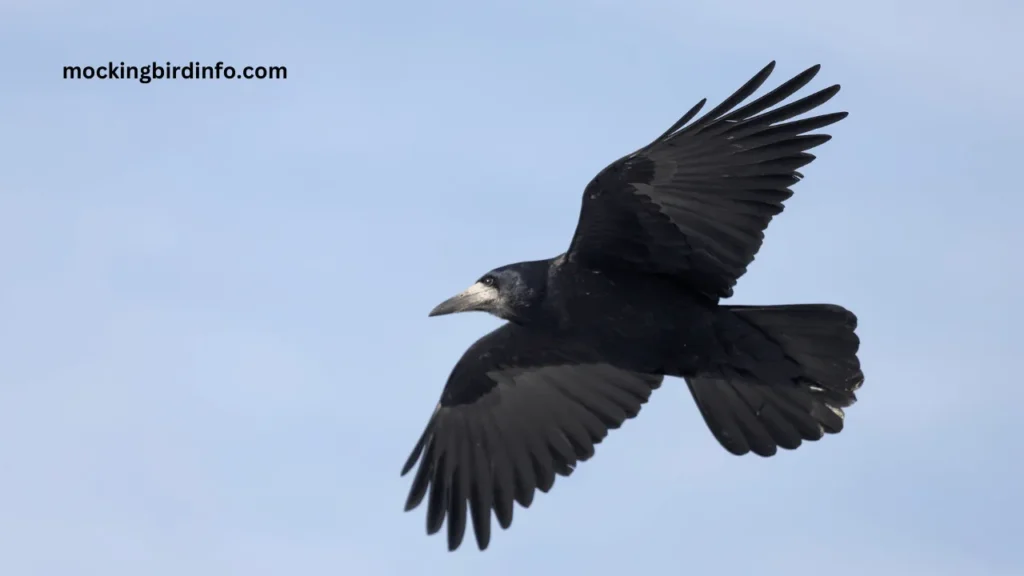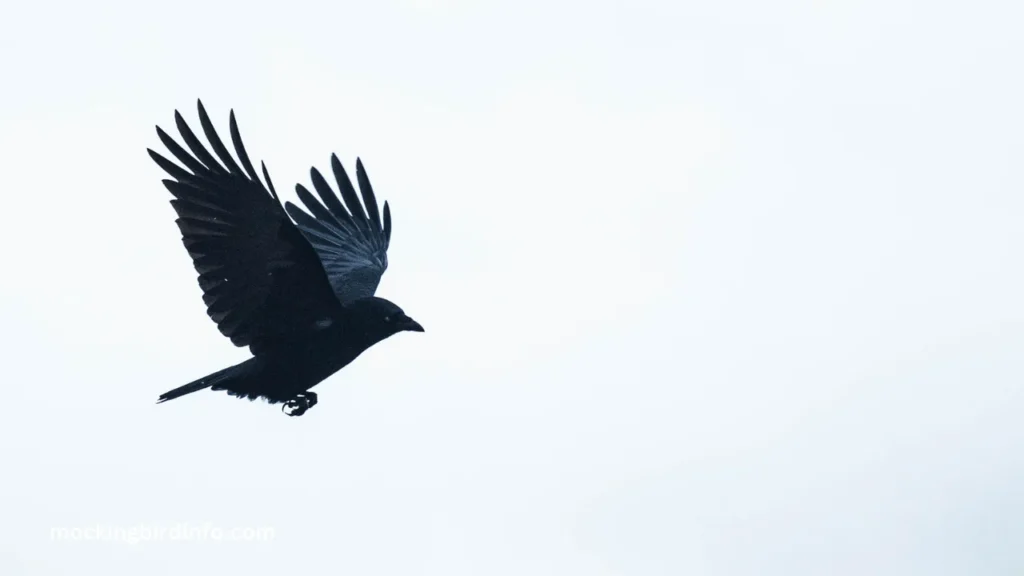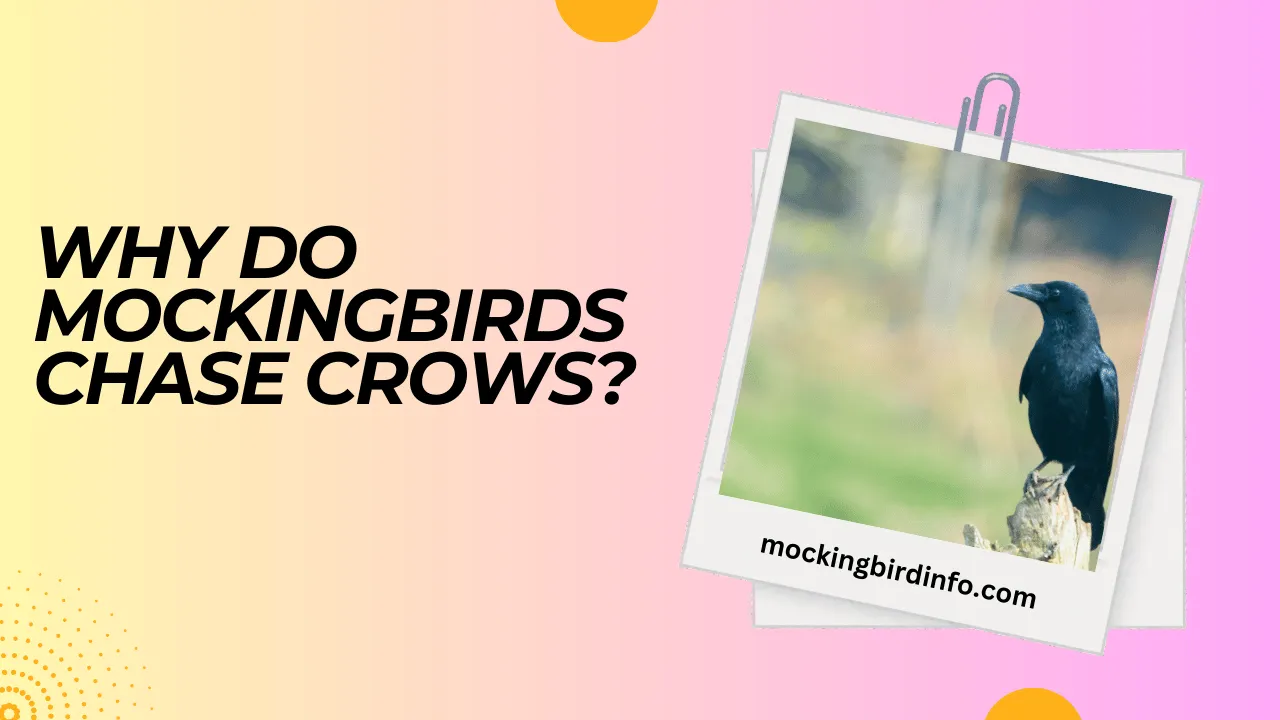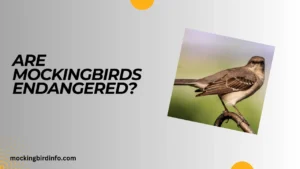Have you ever paused to watch as a small, fearless mockingbird darts through the sky, relentlessly chasing a crow that’s many times its size? This unexpected behavior can seem like a mismatch, but in the world of birds, appearances often hide deeper truths.
Mockingbirds, known for their beautiful songs and mimicry, also possess a lesser-known fierce side. This dramatic display isn’t just about size or strength—it’s about instincts, survival, and the uncompromising protection of territory and young.
Understanding why mockingbirds chase crows reveals more than just an interesting quirk of nature. It sheds light on how territorial instincts, competition for limited resources, and the protection of vulnerable young shape behavior in the avian world. Such interactions are vital for appreciating the challenges birds face and the surprising strategies they use to overcome them.
In this article, we’ll explore the primary reasons why mockingbirds exhibit such aggression, from their deeply ingrained territorial defense mechanisms to their survival tactics in environments increasingly shared with humans and other bird species. We’ll also examine how habitat changes influence these behaviors and how mockingbirds’ adaptations reveal their resourcefulness and determination.

Contents
- 1 Territorial Defense
- 2 Resource Competition
- 3 Protection of Young
- 4 Impact of Habitat Fragmentation
- 5 Conclusion
- 6 FAQs
- 6.1 1. Why do mockingbirds chase larger birds like crows?
- 6.2 2. Are crows dangerous to mockingbirds?
- 6.3 3. Do mockingbirds only chase crows?
- 6.4 4. What triggers mobbing behavior in mockingbirds?
- 6.5 5. Do crows ever fight back against mockingbirds?
- 6.6 6. Can mockingbirds and crows coexist peacefully?
Territorial Defense
Core Territory: At the heart of a mockingbird’s behavior is its dedication to territory. Mockingbirds don’t simply occupy space; they claim and defend it as an essential lifeline.
Their territories are vital for sourcing food, nesting safely, and ensuring their young’s survival. These areas can range from backyards to larger parks, and once a mockingbird establishes its domain, it becomes fiercely protective.
Intruders: The crow, with its sharp beak and clever nature, can be a formidable intruder. Crows are known to venture into other birds’ territories in search of food or material for nests.
This behavior triggers an immediate response in mockingbirds, who view such encroachments as direct threats. For mockingbirds, tolerating a crow is not an option; it could mean compromised safety for their nest and reduced resources.
Aggressive Tactics: Mockingbirds have developed an arsenal of defensive maneuvers to repel intruders. They employ dive-bombing, using swift, targeted swoops to startle and disorient larger birds.
This method is both impressive and effective, allowing the mockingbird to punch above its weight in terms of confrontation. Their shrill, persistent calls add to the display, creating an acoustic warning to other potential threats nearby.
Resource Competition
Food and Water: Both mockingbirds and crows are omnivorous, meaning their diets often overlap. This shared diet includes fruits, insects, small amphibians, and even food scraps found in urban settings.
During times of scarcity, competition for these vital resources becomes fierce. Mockingbirds, which rely on their agility and adaptability, often take proactive steps to ensure they aren’t outcompeted, even if it means confronting larger birds like crows.
Nesting Sites: The availability of nesting sites is a particularly contested resource, especially in urban and suburban environments where trees and bushes may be scarce. While crows often prefer to nest high in the tallest trees, mockingbirds use medium-height vegetation for building their nests. In areas where space is limited, these birds may find themselves vying for the same areas, prompting aggressive behavior to secure the best spots.
Territorial Overlap: As mockingbirds and crows increasingly share spaces in human-dominated environments, the overlap of territories becomes inevitable. This overlap can lead to conflicts as mockingbirds strive to maintain exclusive control over their space, even if it means launching dramatic chases.

Protection of Young
Parental Instincts: Mockingbirds are among the most dedicated avian parents. Their protective nature peaks during breeding season, as their primary goal becomes safeguarding their nests. Crows, known for their opportunistic feeding, will sometimes prey on eggs and fledglings, making them a natural adversary for breeding mockingbirds.
Mobbing Behavior: The protective measures mockingbirds take extend beyond solitary defense. Often, they engage in mobbing behavior, where a group of mockingbirds or even different bird species coordinate to repel a predator.
This collective effort is strategic, using numbers to create confusion and drive away a potential threat. Mobbing showcases not just individual courage but a shared instinct for survival among birds.
Vocal Alerts: Mockingbirds employ an array of vocal signals to alert others of danger. These calls serve a dual purpose: they warn nearby birds to be cautious and draw attention to the intruder, making it more difficult for predators to go unnoticed. These vocalizations contribute to the high level of community awareness in bird populations and reflect the depth of their social interactions.
Impact of Habitat Fragmentation
Reduced Territory Size: As cities and suburbs expand, birds face increasingly smaller and more fragmented habitats. Habitat fragmentation forces different bird species into closer proximity, amplifying competition and stress.
For a species as territorial as the mockingbird, this situation means defending smaller, highly valued spaces even more fiercely.
Increased Competition: The effect of shrinking habitats isn’t just felt by mockingbirds; crows and other birds are also impacted. As a result, there is increased competition for limited resources.
Mockingbirds, which are particularly adaptable to human-altered environments, may find themselves more frequently in conflict as they try to maintain their place in a crowded ecosystem.
Adaptations to Urban Life: Mockingbirds have adapted remarkably well to living alongside humans, taking advantage of gardens, parks, and other green spaces. However, this adaptability comes with the cost of frequent encounters with other aggressive birds like crows.
Despite this, mockingbirds leverage their boldness and rapid reflexes to hold their ground.
Conclusion
The sight of a mockingbird chasing a crow is a vivid reminder of the complex, relentless struggle for survival in the natural world. This behavior is driven by territorial instincts, resource competition, and a deep commitment to protecting their young.
These interactions are further exacerbated by habitat fragmentation, pushing bird species into ever-closer contact and raising the stakes for territorial control.
Understanding why mockingbirds chase crows helps illuminate the dynamic relationships that shape the bird world. It also highlights the importance of conservation efforts to maintain balanced ecosystems where these behaviors can remain part of a sustainable, natural order.
Preserving natural habitats, planting bird-friendly vegetation, and being mindful of environmental impacts can help ease the competition that drives such dramatic displays.
In a world where nature and human spaces increasingly overlap, appreciating the determination of birds like mockingbirds enriches our understanding of resilience and adaptability in the face of change. It serves as a reminder of the delicate balance of ecosystems and the lengths that living beings go to protect their place within them.
FAQs
1. Why do mockingbirds chase larger birds like crows?
Mockingbirds chase crows primarily out of a need to protect their territory and offspring from potential threats.
2. Are crows dangerous to mockingbirds?
Yes, crows can be predatory, often targeting eggs and young birds, which makes them a significant threat during the nesting season.
3. Do mockingbirds only chase crows?
No, mockingbirds will chase any animal or bird they perceive as a threat, including other birds, cats, and even humans.
4. What triggers mobbing behavior in mockingbirds?
Mobbing is usually triggered by the presence of a predator, such as a crow, near their nesting area or territory.
5. Do crows ever fight back against mockingbirds?
While crows may retaliate if they feel cornered, they typically avoid prolonged conflicts with persistent attackers like mockingbirds.
6. Can mockingbirds and crows coexist peacefully?
They can coexist if there’s ample space and resources. However, when resources are limited, conflicts are more likely.








